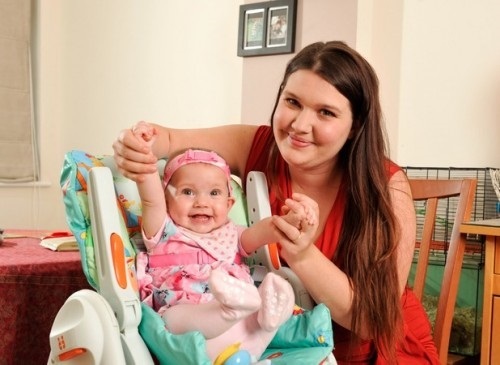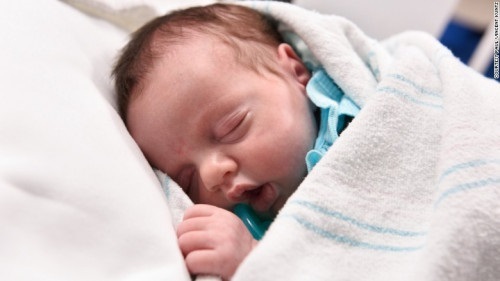Developments
Developments in fetal surgery
First case of Fetal Surgery
In 1980 at the University of California, San Francisco, Dr. Michael Harrison & his team developed a successful modern animal model for fetal surgery. Results of animal models and surgeries for spina bifida in the 1980s established technical feasibility and showed early evidence of improved outcomes. [1]
In 1981, Harrison met Rosa Skinner, a woman pregnant with twins - a boy and a girl. Her doctor had noticed through sonograms, that her baby girl was developing just fine, but her baby boy was not. Further tests indicated that her unborn son had a urinary tract obstruction, which could lead to fatal kidney and lung failure. Rosa and her husband met with Harrison and his medical team to discuss their options and the risks of potentially performing open fetal surgery. One of the risks of the surgery was that it posed a potential danger to her unborn daughter, who was healthy and developing normally at the time. The Skinners agreed to the surgery in the end.
Harrison performed that surgery on 26 April 1981. During the operation, Harrison made a small incision into Skinner’s uterus, where he placed a small shunt, or a small tube, that he created into the male fetus’s bladder. The specially designed shunt, which Harrison named the Harrison shunt, allowed the urine to excrete into the amniotic fluid. Many other surgeons have used the Harrison shunt in other fetal surgeries since Harrison first created it. After placing the Harrison shunt in Skinner’s fetus, Harrison sutured Skinner’s uterus and abdomen, allowing the two fetuses to progress to a full-term pregnancy. The surgery was one of the first ever successful fetal surgeries performed in utero, as Skinner’s twins were born two weeks after the surgery and survived. Skinner named her daughter Mary and her son Michael, after Harrison. Skinner’s son went on to undergo a few more surgeries, including having the blockage in his urinary tract removed and having the swelling in his stomach that resulted from his urinary tract obstruction repaired. Skinner claimed that her son took a little bit longer than most toddlers to sit up, but that he was up and walking by the time he was eighteen months old. [2]
Nearly 24 years later, he returned to his birthplace for an emotional reunion with Dr. Michael Harrison, the surgeon who saved his life before he ever drew a breath.
Read more on the story here...

Michael Skinner has his lungs checked by Dr. Michael Harrison, who operated on him in his mother's womb. Chronicle photo by Katy Raddatz
Baby girl given chance of life after operation in womb

When Sarah and Luke Rollings went for their 20-week scan, they were given the devastating news that their unborn child had just a 10 percent chance of survival.
The scan revealed their little girl had no diaphragm, meaning all her major organs were squashing her undeveloped lungs.
The couple, from Monmouth, were offered a termination by doctors due to the slim chance of survival, but then were told of a pioneering operation which was still in its experimental stage.
The operation involved inserting a tiny balloon into the unborn baby's windpipe to stop fluid exiting the lungs and forcing the lungs to expand. The risk of miscarriage was high.
However, Sarah, 34, and her husband Luke made the brave choice to go ahead with the surgery – and it worked. Baby Hope survived the pregnancy and was born in March 2013.
Fetal surgery on babies with Spina Bifida
Thirty years after UCSF doctors performed the world's first fetal surgery, researchers have the first hard evidence that the surgery really works and that the benefits to newborns can outweigh the risks to moms.
In a study published online Wednesday in the New England Journal of Medicine, researchers reported that fetuses with spina bifida, a defect that affects the spinal cord, were less likely to suffer some of the most serious complications of the disease when they were operated on in the womb compared with babies who underwent the same surgery after birth. They were twice as likely to be able to walk unaided by the time they were toddlers.
“This is a huge game-changer for fetal surgery," said Dr Diana Farmer, lead author of the study. "This study shows it can be done pretty safely, and it will open the door for other patients and other diseases. It really does validate the original hypothesis, 30 years ago, that you could improve the outcomes for these children if you operated on them before birth." [3]
Watch the video below and listen to the amazing story about Evan, who had fetal surgery for spina bifida performed on him:
Lynlee - The baby who was born twice

At 23 weeks, LynLee Hope underwent a crucial operation and was returned to her mother's womb. LynLee healed and continued to grow until she was born at 36 weeks.
Margaret Boemer went for a routine ultrasound 16 weeks into her pregnancy with her third child. She quickly found out that things were far from routine.
“They saw something on the scan, and the doctor came in and told us that there was something seriously wrong with our baby and that she had a sacrococcygeal teratoma,” the Plano, Texas, mom said in an interview shared by Texas Children’s Hospital. “And it was very shocking and scary, because we didn’t know what that long word meant or what diagnosis that would bring.”
Further Advances
Dr. Thomas Kohl
Thomas Kohl is a paediatrician with 20 years of clinical experience in minimally invasive fetal surgery. He developed, co-developed, and clinically introduced a large spectrum of fetal interventions. He pioneered the technique of fetoscopic closure of spina bifida, as well as the technique of fully percutaneous (a method of surgical intervention where the problem is treated through small puncture sites in the skin, as opposed to a large incision [4]) partial amniotic carbon dioxide insufflation. Partial amniotic carbon dioxide insufflation (PACI) involves insufflating the amniotic sac with carbon dioxide and, in some cases, draining some of the amniotic fluid [5], in order to improve visualisation and facilitate complex fetoscopic surgery [6]. Kohl also co-developed fetoscopic tracheal balloon occlusion for the treatment of severe pulmonary hypoplasia, a condition in which the lungs are abnormally small and do not have enough tissue and blood flow to allow the baby to breathe on his or her own, which can be life-threatening [7]. Furthermore, Kohl has developed new, minimally invasive techniques for early second trimester shunt insertion in fetuses with lower urinary tract obscutions and for fetuses with hydrothorax [8], a condition where abnormal amounts of fluid form within the chest of a fetus [9].
Links
- Fetal Surgery: The Ochsner Experience with In Utero Spina Bifida Repair.
- The Embryo Project Encyclopedia - Michael R. Harrison
- SFGATE - Study vindicates UCSF fetal spine surgery
- Cleveland Clinic - Percutaneous and Endoscopic Interventions
- Carbon dioxide insufflation for percutaneous fetoscopic spina bifida repair
- Physiological effects of partial amniotic carbon dioxide insufflation with cold, dry vs heated, humidified gas in a sheep model.
- Pediatric Pulmonary Hypoplasia
- Lifesaving Treatments for the Tiniest Patients—A Narrative Description of Old and New Minimally Invasive Approaches in the Arena of Fetal Surgery
- Fetal Hydrothorax.